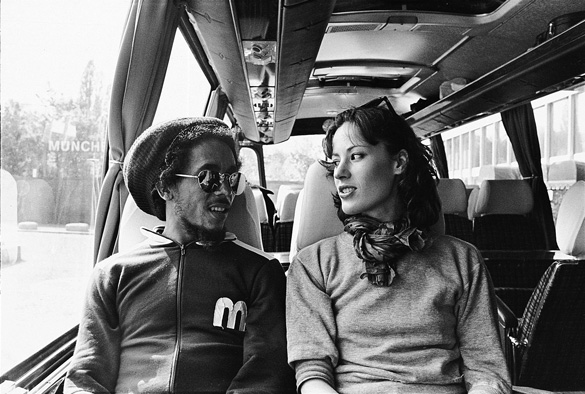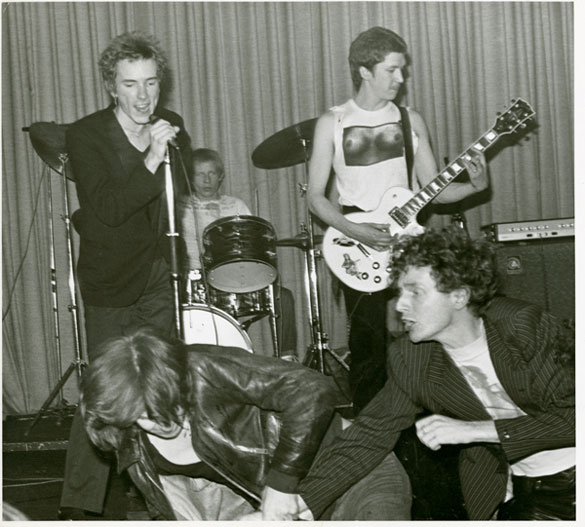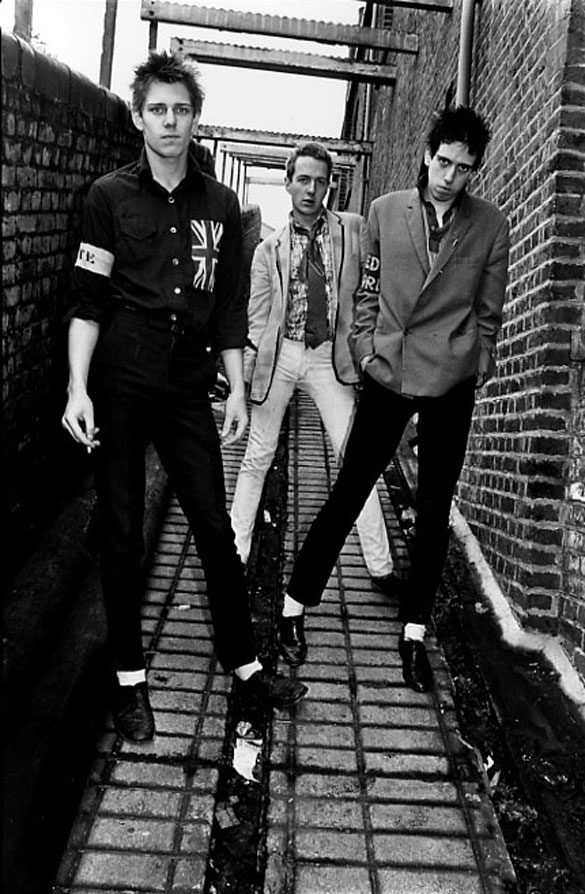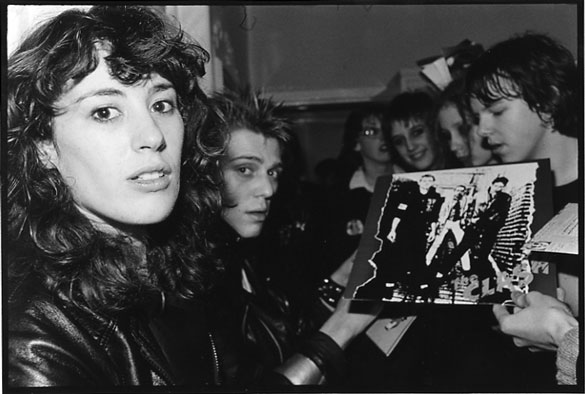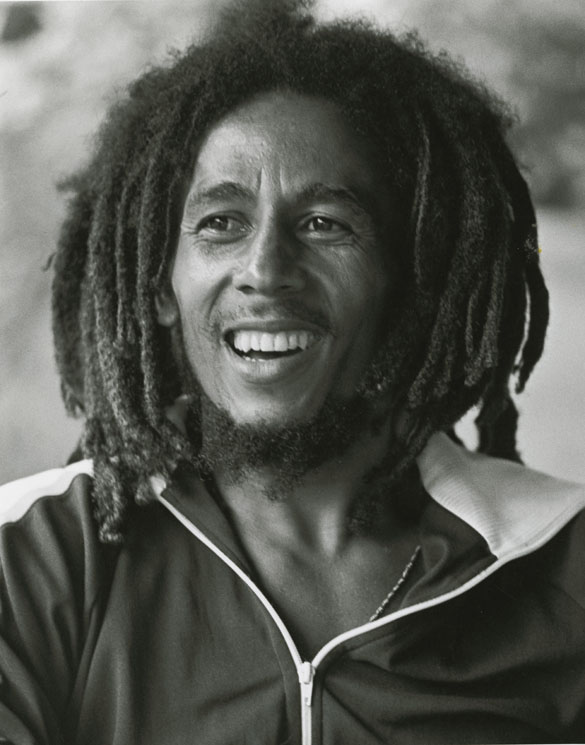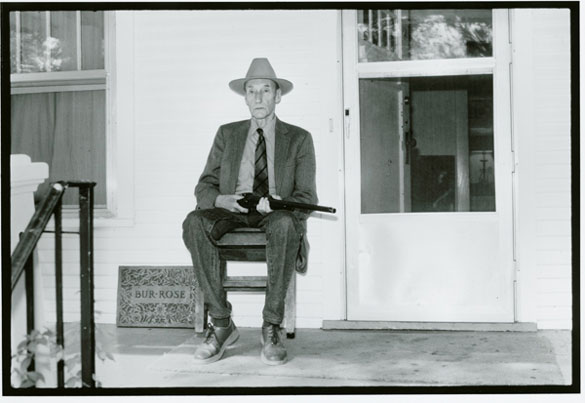Photography: Kate Simon
This portrait of David Bowie was taken by Kate Simon at Olympic recording studios in Barnes, west London, on January 14, 1974.
Simon’s photograph captures a man on the cusp; furiously occupied in the studio, Bowie was tying up loose ends ahead of his departure for America 10 weeks later. He hasn’t lived in Britain since.
Three days before this was taken, Bowie’s production job on Lulu’s version of The Man Who Sold The World was released as a single. Applying himself to finishing Diamond Dogs, Bowie also recorded such eventually unreleased tracks as Take It Right (to become Right, a “plastic soul” anthem on Young Americans) and a try-out of Bruce Springsteen’s Growin’ Up.
Sessions with vocal trio The Astronettes – including paramour Ava Cherry – had proved inconclusive, though an olive branch recently extended to erstwhile producer Tony Visconti soon bore fruit in the form of renewed collaboration.
A month after the shot was taken, Rebel Rebel was released ahead of the marathon US touring schedule over 1974/5 which marked the severing of business relations with Tony Defries and the faltering of his marriage to Angie.
I wanted to talk to Simon about the stories behind this image and others which deliver an emotional charge yet retain the reportage stance of the cool documentarist.
On the line from her studio in NYC, Simon gave me the back-story: after studying for a year in Paris, during which time she came to know London, Simon undertook a course at Washington’s Corcoran School Of Art in the early 70s and headed to the UK to realise her ambition of becoming a professional photographer.
“It was something which possessed me from a very young age,” says Simon, who was inspired by accompanying her hobbyist surgeon father on trips to camera stores.
“When I left Corcoran, I said to myself: ‘Well you’ve got to do it, or forget it.’ So I went the airport, called my mother and told her that I was going to London to become a photographer.
“She said, ‘Katherine, you’re crazy’. It was not encouraging, can I just say that?”
On arrival, Simon scored a job working the front-desk and the library at London’s Photographers Gallery. “That was significant,” she says. “I could look at the first edition of Bill Brandt’s Shadow Of Light and meet the photographers from Magnum, when that meant something. I could even watch David Bailey work; he came along one day to shoot at the gallery.”
The job meant that Simon associated with the likes of Leonard Freed, David Hearn and Josef Kourdelka. “I was the kid absorbing it all, like a sponge,” she says.
Soon Simon struck out on her own, tracking down WH Auden to an Oxford tea-shop, where the poet acceded to her request to take his portrait.
Then she was taken on the staff of music weekly Disc & Music Echo by art director Dave Fudger.
“It was brilliant working with Dave, for whom I have the utmost respect,” says Simon. “Every day was a different job: ‘Today you have to go to Gary Glitter’s flat because he’s on a new diet’; ‘Rod Stewart has bought a new Excalibur, get down to Windsor and take a picture of him by the car’. It was: ‘OK chief’, and off I’d go.”
Early in 1974 Simon was assigned to photograph Stomu Yamashta; the Japanese multi-instrumentalist was recording at Olympic in a room adjacent to that where Bowie was working on Diamond Dogs.
“I can see David clearly now, sitting behind the huge desk in the main room, in a long green synthetic fur coat and a green felt hat, singing and playing acoustic guitar.
“I was overwhelmed at how good he was, just accompanying himself. And he was lovely, gave me absolute freedom that day,” says Simon, who went on to photograph the performer a lot over the ensuing years.
“He kept calling me ‘Bette’ – he believed I looked like Bette Midler – and once I was done, said: ‘Bette, do you need a lift back into town?’
“He was heading to Oakley Street (in Chelsea) and so I got a ride in this huge limousine to my flat in Fulham. He was very, very nice, but all the way – on what was quite a long journey – he didn’t say word, until I got out. Then he said: ‘I’ll see you again.’ Maybe he was kind of wistful that day.”
By April 23 1976, when she caught the Sex Pistols and manager Malcolm McLaren in the melee which occurred at their gig at the Nashville Rooms in West Kensington, Simon had moved with Fudger to Sounds and was part of a new crowd as one of four notable London-based American females (the others being Chrissie Hynde, Judy Nylon and Patti Palladin).
“This is going back 75,000 years. I think I just went along I knew people like Caroline Coon, Mick Jones, Paul Simonon and John Lydon,” says Simon.
“Judy always said that John Lydon is a man who likes women, he really gets them, and I agree. From the first time I met him I found John to be smart and funny, a good guy.”
As I documented in In Their Own Write, Coon was at this stage champing at the bit to champion the Pistols in Melody Maker, but was stymied by the prog- and glam-rock old guard which included writers Michael Watts and Allan Jones (who lambasted the group as “dreadfully inept” before changing his tune once punk went overground).
“Caroline’s place in Tregunter Road, Fulham, was a meeting ground, so I was round there a lot with Jonh Ingham,” says Simon.
“Caroline and Jonh were always on about punk, punk, punk. I’d be upstairs hanging out with Paul and Mick thinking: ‘If these people don’t shut up about punk I’m gonna kill them!’ Mick and Paul were like me: whatever, roll another spliff!”
Such associations gave rise to Simon’s photograph for the front cover of the debut album by The Clash, which was taken outside Bernie Rhodes’ Rehearsal Rehearsals in Camden, north London in November 1976.
“That came about because I followed my intuition once I’d made a connection with those guys,” says Simon. “A strange thing happened to me during the shoot. I started crying. Joe, Mick and Paul just looked at me as if to say ‘Ah that’s Kate, she’ll be alright’, and even I didn’t understand why I was so emotional.
“Maybe I knew that I was doing something which wasn’t just important to me, but was going to be significant for a lot of people. It never happened to me before, and hasn’t since.”
Simon returned to NYC in 1978 just as the downtown scene was blossoming, and since then has profiled via portraiture such figures as Warhol, Burroughs, Patti Smith, Madonna, Bob Marley and Miles Davis.
So what has been her approach? “To make a connection; I love good eye contact, first and foremost. Also cultivating my work, which has been my greatest companion. My recommendation is: Follow your bliss and cultivate your work. That is one companion which will never abandon you.”
All photos (c) Kate Simon. See more of her work at her website and also Snap Galleries.
Dates + info regarding David Bowie from Any Day Now: David Bowie A London Life 1947-74 by Kevin Cann (Adelita £24.99).


